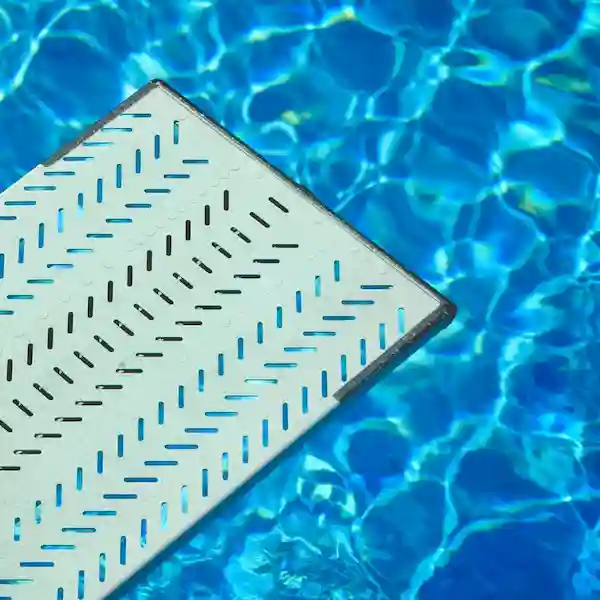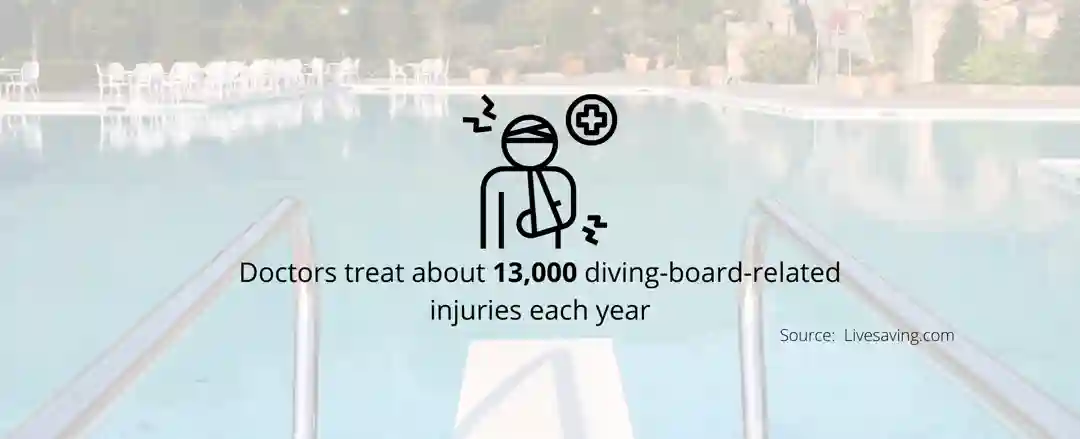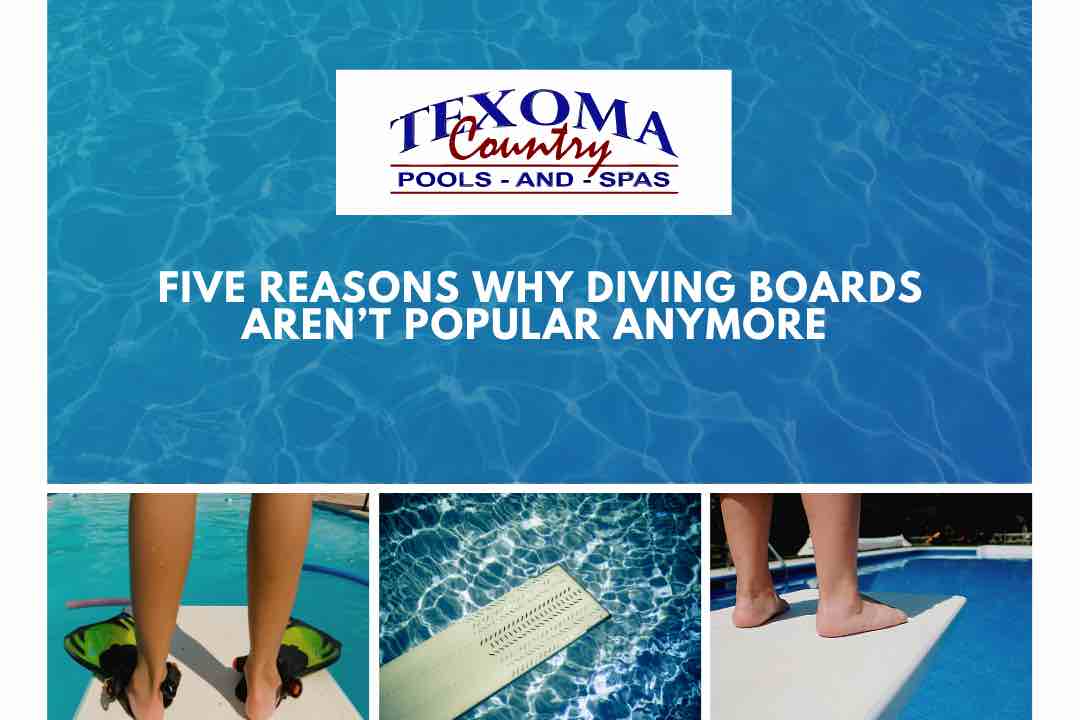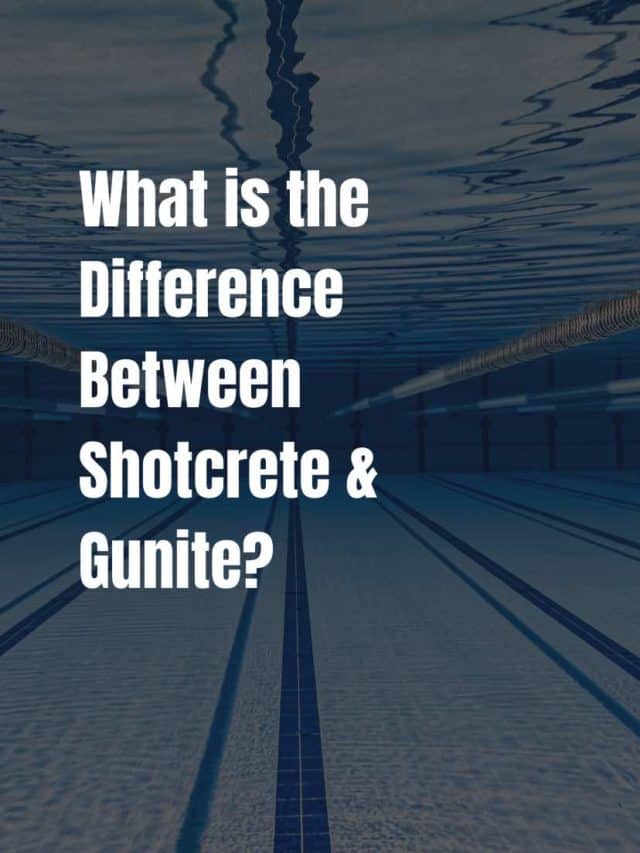Many families are looking for safe ways to relax and spend time together as COVID-19 restrictions continue to make travel and vacation plans tricky.
Instead, Texoma Country Pools and Spas is helping families create their own backyard paradise. Who needs a five-star resort when you can have an inground pool, hot tub, or backyard kitchen right at home.
As you design your private oasis, you’ll notice a trend among many of the swimming pools built today: Most pools do not have a diving board. It’s true, if you take a look at our pool gallery, you’ll see that waterfalls, slides, and other features seem to have replaced diving boards.
So what’s driving this change? Let’s take a look…

Diving Boards Can Be A Safety Risk
If you are like most kids, you’ve likely jumped off of a diving board a time or two only to have an awkward landing or “belly flop.” Fortunately, most of us walk away from these mishaps with minor discomfort.
However, researchers at Ohio State University and Consumer Product Safety Commission (CPSC) discovered many children end up in hospital emergency rooms. Studies show doctors treat about 13,000 diving-board-related injuries each year. Diving accidents cause approximately 800 spinal cord injuries yearly.

You might think that teenagers attempting flips or other gymnastics are the primary drivers for these statistics, but research published in the Journal of the American Academy of Pediatrics demonstrates that two-thirds of diving-related injuries occur among children younger than 15.
Colliding with the diving board, diving into too shallow water, or slipping on the diving board are some of the most common injuries. Younger children and teens especially are prone to slip or accidentally land on another swimmer. For these reasons, many homeowners opt to design their swimming pools without a diving board.

Diving Boards Create Less Space to Play
If your goal is to provide your family and friends with a safe space to splash and play, a diving board may not be the right choice for your family. Studies have shown that most people spend about 80 percent of their time in their pool’s “play area.” A play area is anywhere you can stand with your head above water – essentially the shallow end.
A pool with a diving board is typically divided into thirds – one-third shallow end, one-third hard slope and one-third diving well. If most of your time is actually spent in the shallow end, it makes sense to make this section of your pool larger.
If you install a diving board, two-third of the pool’s “real estate” is typically dedicated to the space needed for the board. You’re left with less space to play volleyball, basketball, and other games.
Diving Boards May Not Be Covered By Your Homeowners Insurance
Most insurance companies will gladly insure your pool. You can expect only a modest increase to your annual premium. It’s typically less than $75 per year.
However, if you add a diving board to the mix, it’s a different story. Most insurance companies require additional liability insurance and some companies won’t cover you at all.
It’s a good idea to check with your insurance agent as you plan for your swimming pool. Many policies have stipulations with their coverage. For example, some companies ask homeowners to install a fence with a self-closing gate around their property or pool. Fences are also frequently required to comply with city ordinances and Homeowners Associations bylaws.

Fences can be an attractive addition to your backyard design. Iron or decorative wood can enhance your landscaping and backyard. Plus, a fence is just a smart idea – homeowners are responsible for any children who use their pools, whether they have permission or not.
Diving Boards Require Larger Pools
Safe diving zones mean you might need to build a larger pool than you have originally planned. Pools with diving boards require a sloping bottom that leads to a diving zone. To safely accommodate a diving board, you can expect to build your pool at least 38 feet long.
If you live in a subdivision or master planned community, you may not have the space in your backyard to accommodate an extra long swimming pool. Most pools built today are 35 feet long or less.
Long pools may also cause you to sacrifice your plans in other areas. Building sufficient deck and patio space is important. You may find you spend just as much time lounging, eating, playing and socializing around the pool as you spend in the pool.
Adding an outdoor kitchen may not be in the budget now, but you’ll also want to consider how you’ll use the space in the future. Leave room for lounge chairs, patio sets and other furniture designed for entertaining.

Diving Boards Drive Up Costs
Finally, diving boards drive up costs quickly. During the building process, you can expect to pay more for the larger pool you’ll need to accommodate a diving board. Excavation, material, labor and equipment costs all go up with a bigger swimming pool.
Plus, like we previously mentioned, you can expect to pay more on your homeowner’s insurance.
Maintenance costs for a larger pool are also likely to be more. You can budget more to fill your pool with water, keep your pool clean and maintain the right chlorine/ pH water levels.
None of these expenses are likely to bust your budget, but over the years these costs can add up.
Texoma Country Pools and Spas
Diving boards can be lots of fun. Aquatic centers with large pools, plenty of depth, and lifeguard supervision can provide plenty of opportunities for youngsters to jump and dive safely.
Swimming lessons that teach safe diving techniques are also a great option.
Whether you decide to include a diving board or not, the experts at Texoma Country Pools and Spas can help you design a custom inground pool or freeform pool that will meet your goals and budget.
Ready to jump in? Request a quote to get started today!






















